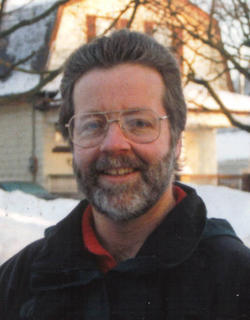When I first undertook to read and review Jim's book, "Goblin Quest", I have to admit I was nervous! Jim's a regular and valued participating member in your Yahoo reading group Fantasy Favorites. I felt more than a little conflicted. I was pleased to share space and chat with a published author. I was, truth be told, a little jealous that Jim had reached that lofty goal of completing and publishing a complete novel (a goal which I hesitantly admit to sharing but - ah, never mind, that's another story!). I was even a little star struck but more than anything else I was nervous as hell about reading and reviewing his book. Shoot ... just what the hell would I say if I didn't care for the book? How could I be honest to myself and my reviewing if I didn't like it and yet be charitable to a member of my own reading group?
Whew ... all the worries were groundless! Here's my review:
 In Hines’ typical fantasy world populated with elves and dwarves, princes and wizards, goblins are definitely at the bottom of the fantasy food chain. But in this apparently quite typical fantasy world, Jig is not your typical fantasy hero. In fact, Jig is an introverted runty little near-sighted goblin with self esteem issues and, as Rodney Dangerfield would quip, he definitely gets no respect.
In Hines’ typical fantasy world populated with elves and dwarves, princes and wizards, goblins are definitely at the bottom of the fantasy food chain. But in this apparently quite typical fantasy world, Jig is not your typical fantasy hero. In fact, Jig is an introverted runty little near-sighted goblin with self esteem issues and, as Rodney Dangerfield would quip, he definitely gets no respect.When a routine Goblin patrol is attacked, Jig and his perpetually nervous pet fire spider Smudge are astonished to find themselves hijacked and pressed into guide duty by a group of adventurers. A human prince dealing with his own set of esteem issues and who feels he has something to prove, his older brother (a wizard still learning his craft), a dwarf warrior and an elven thief who doesn’t seem particularly skilled in the fine art of thievery, need his guidance through the dark maze of goblin tunnels to make their way past The Necromancer and to obtain The Rod of Creation, thought to be carefully guarded by the dragon Straum.
Thus is the scene set for readers, young and old alike, to enjoy a light, easy-reading entertaining comedic adventure romp, the plights and perils of a ragtag little group as they stumble their way from one sticky wicket into another! Jig’s witty dialogue and Hines’ clever jokes and puns, which pile on top of one another with almost dizzying frequency, will elicit reader reaction ranging from wry grins to out loud belly laughs.
But Jig’s philosophizing and deeply probing self-examination also show that Hines’ possesses deeper ability as a writer, to use the device of comedy as a means to probe more serious, more difficult issues – the nature of religious faith, the worship of gods and the form of prayer; loyalty to one’s comrades in arms; the juxtaposition of fear and courage in the heat of a battle; the overwhelming love that one can feel for a pet, even one as off-the-wall weird as a fire spider; and the destructive results of unseemly pride and overwhelming greed; to name only a few. That is not to suggest that “Goblin Quest” is a moralizing epistle in any fashion. Far from it, indeed! This is only to suggest that Hines’ book goes significantly further than a mere collection of goblin runt jokes!
Well done, Jim. I’ve now got my eyes peeled and my breath baited anticipating the arrival of the sequel “Goblin Hero”.
Highly recommended.
Paul Weiss











